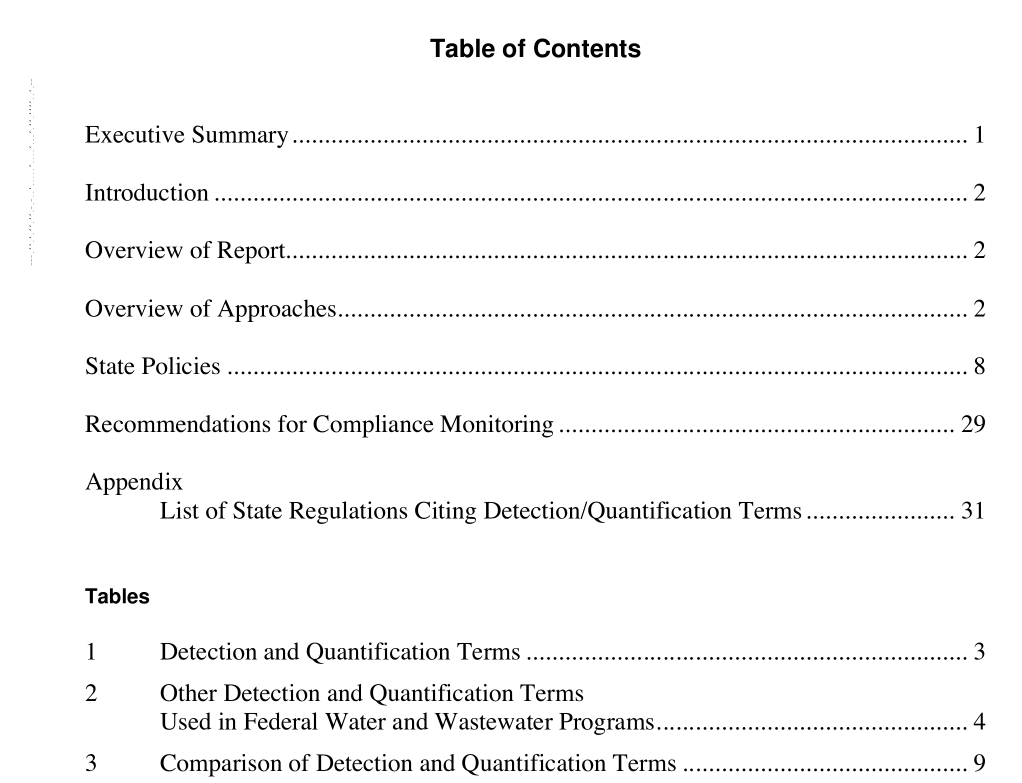API Publ 4721 pdf download

API Publ 4721 pdf download.Analytical Detection and Quantification Limits: Survey of State and Federal Approaches
The American Petroleum Institute (API) conducted a review of state policies related to analytical detection and quantification limits, with particular focus on water quality and wastewater issues in permitting and compliance. Ten states were reviewed: Alabama, California, Illinois, Louisiana, New Jersey, Ohio, Oklahoma, Pennsylvania, Texas, and Washington. Summary findings of this review are: § Every state incorporates detection or quantification terms in its regulations. Terms referenced in regulations are usually defined in the regulations, but not always. The most frequently used terms are detection limit/level, method detection limit (MDL), and practical quantitation level (PQL). Minimum level (ML) is used by Alabama, California, Illinois, and Ohio.` § The states vary in the extent to which detection and quantification terms are incorporated into their regulatory language. Some states prefer to have the most detailed policies in their water quality implementation procedures; other states prefer to put the detail directly in the regulations. § The states will set wastewater permit limits at or below detection or quantification levels, where considered protective of water quality. Most states specify, either in their regulations or implementation procedures, how compliance is demonstrated in such cases. Compliance with a maximum concentration limit is demonstrated by a Òless-thanÓ analytical result (a detection or quantification limit, as applicable). Where a mass load or average concentration is calculated, most states specify that zero be used in lieu of less-than values. In some situations, one-half the detection limit must be used. § Although the states have procedures for allowing wastewater permittees to develop site-specific detection or quantification limits based on state- or EPA- defined methods, none of the states had specific procedures for developing or approving alternative methods.
The ML is a quantification term defined by the USEPA as: ÒThe concentration at which the entire analytical system must give a recognizable signal and acceptable calibration point. The ML is the concentration in a sample that is equivalent to the concentration of the lowest calibration standard analyzed by a specific analytical procedure, assuming that all of the method-specified sample weights, volumes, and processing steps have been followed.Ó 1 The ML concept and how it is calculated have evolved over time. Currently, MLs are usually either calculated as 3.18 times the MDL, or set equal to the lowest calibration standard. The factor of 3.18 is derived from another quantification term, the LOQ (see description later in this section).The AML is defined by Gibbons et al. (1997) on the same basis as USEPAÕs ML, but with notable differences. Like the ML, the AML is defined as the concentration at which the instrument response is 10 times the standard deviation, s. With the AML, the standard deviation is calculated as a function of concentration, whereas the ML uses a fixed standard deviation from a set of replicate analyses. The AML can account for interlaboratory variability and sample matrix effects. Where only single laboratory (intralaboratory) data are available, an adjustment is made to estimate an interlaboratory value. Other Terms Other quantification terms used in state programs are discussed in State Policies . Those found in federal regulations are listed in Table 2. Definitions are included in Table 2 if they were given in the regulations. No references to analytical quantification terms were found in federal environmental statutes. Comparison of Approaches A comparison of the USEPAÕs approaches (MDL, ML, PQL) to the alternate AML and IQE is provided in Table 3. The LOD and LOQ approaches are included in the comparison because of their relationship to the others. Table 3 lists for each term its calculation basis, its advantages, and its disadvantages or issues of concern. The MDL is simple to calculate and widely used in regulatory programs, but has been criticized for various reasons. Because it assumes that the standard deviation does not vary with concentration, its calculation is sensitive to the choice of concentration for the replicate analyses instead of the actual capability of the analytical method. The standard deviation used in the calculation is based on a relatively small data set, usually seven replicates from one laboratory. Because of the extra care a laboratory will take with this procedure, an MDL is not likely to represent routine laboratory performance.









